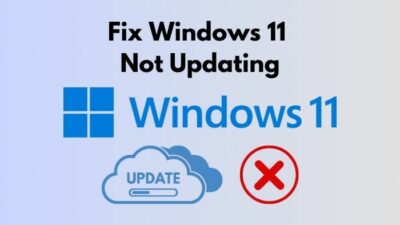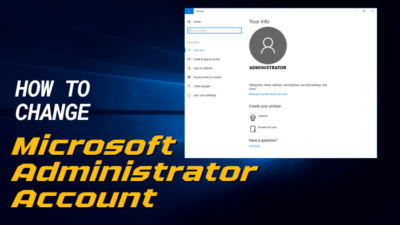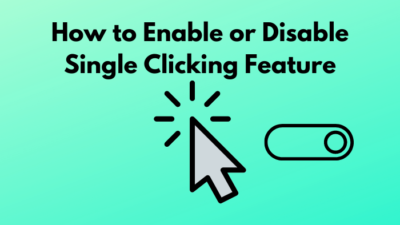Widescreen is now the standard, and vertical space has become more precious than horizontal. But the default taskbar reduces the vertical space and obstructs the ideal widescreen aspect ratio.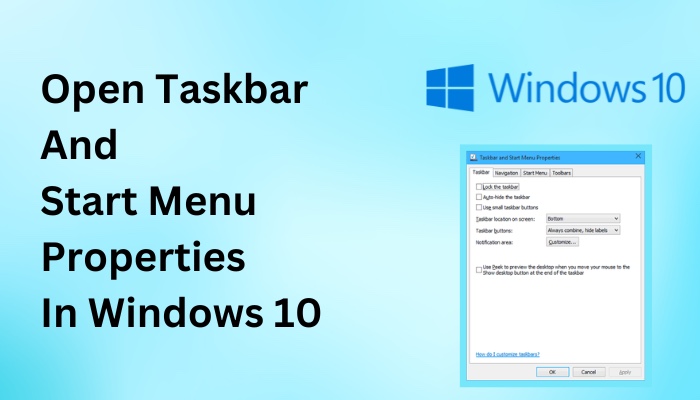
Therefore, many prefer to change their taskbar appearance from the Taskbar and Start Menu Properties to get the most out of the screen.
Here, I’ll describe the easiest way to open the Taskbar and Start Menu Properties and customize them to your preferences. So, let’s begin.
Taskbar settings, previously known as the Taskbar and Start Menu Properties, allow the Windows 10 user to change the taskbar appearance. You can easily navigate the Taskbar settings from the taskbar context menu or search it from the Start Menu.
Follow the procedures below to open the Taskbar and Start Menu Properties on your Windows 10 PC.
Here are the ways to open the taskbar and start menu properties in Windows 10:
- Right-click on the empty area in the Windows taskbar.
- Press on Properties.
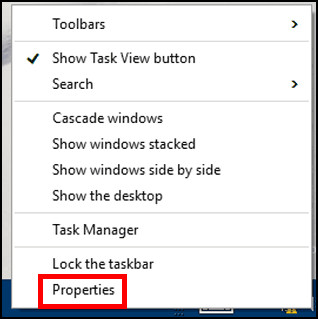
It will open the Taskbar and Start Menu Properties on your Windows 10 PC. You can customize the taskbar and change its positioning from the settings. 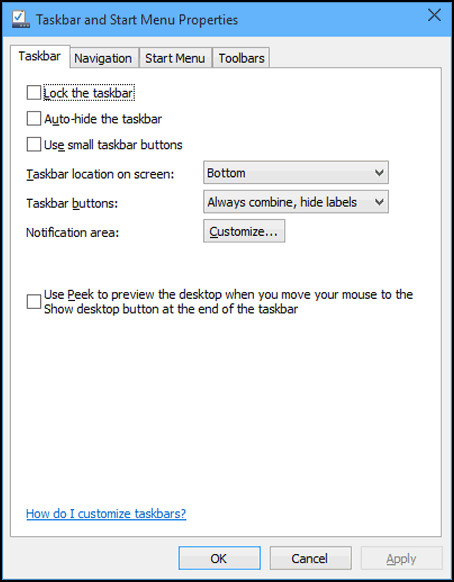
However, with the Windows update, the Taskbar and Start Menu Properties appearance has changed, and currently, it’s known as Taskbar Settings.
Though there are several differences between Windows Education and Pro in terms of features, the Taskbar Settings are the same for all versions.
Consider reading the following instructions to open the Taskbar Settings on every Windows 10 version.
Here is the process of opening Taskbar Settings on Windows 10:
- Right-click on the Taskbar.
- Open the Taskbar settings.
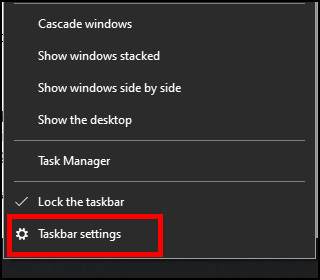
You’ll find settings similar to the Taskbar and Start Menu Properties and can modify the taskbar options. 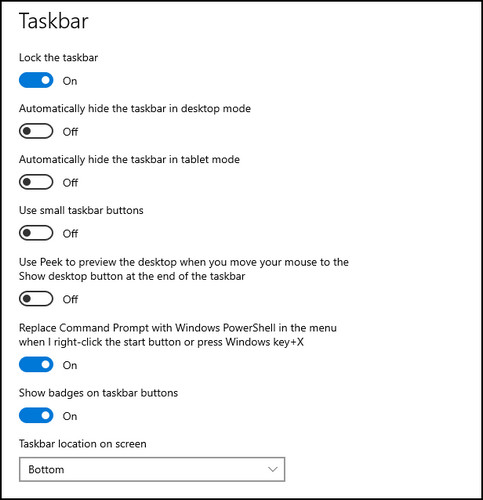
If you want to personalize the taskbar, follow the procedures from the passage below.
How to Customize Taskbar in Windows 10
Windows taskbar is the app access point and helps switch between programs quickly. However, the default settings may not be preferable for everyone and need to be customized. Using the Taskbar settings, you can auto-hide and change the position, size and other settings.
If you’re using Windows 10 or have upgraded to Windows 11, accessing the Taskbar settings and customizing them is the same.
To change the taskbar settings in Windows, follow the below procedures carefully.
Here are the ways to personalize the taskbar in Windows 10:
1. Lock or Unlock the Taskbar
You can freeze or unfreeze the taskbar position by using the Lock the taskbar option from Taskbar settings. By default, the option stays enabled.
If you want to alter the settings, consider following the process below.
Here are the steps to lock the taskbar in Windows 10:
- Right-click on the Taskbar.
- Press on Taskbar settings.
- Turn on the Lock the taskbar option to lock the taskbar position.
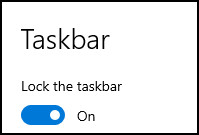
- Disable the Lock the taskbar option to unfreeze it.
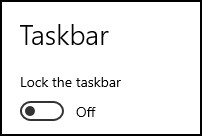
Locking the taskbar will keep the changes you made in the taskbar. If you want to hide the taskbar automatically, follow the steps below.
2. Auto Hide the Taskbar
The auto-hide feature will hide the taskbar and help you to focus on your screen when working. Read the procedures below to hide the taskbar in desktop and tablet mode automatically.
Here is the procedure to enable or disable the taskbar auto-hide option in Windows 10:
- Navigate to the Taskbar settings.
- Enable or disable the Automatically hide the taskbar in desktop mode option.
- Turn on or off the Automatically hide the taskbar in tablet mode option.
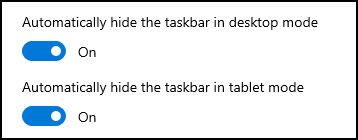
The items will reappear when you move your cursor to the taskbar. If you are having an issue, read this article to fix the taskbar auto-hide option in Windows.
The small taskbar button reduces the app icon size to fit more apps on the taskbar. The option stays disabled by default. To use the feature, consider reading the following instructions.
Here is the method of using small taskbar buttons in Windows 10:
- Open the Taskbar settings from the bottom taskbar.
- Enable the Use small taskbar buttons.

It will reduce your taskbar and app icon size. You can disable using the same procedure to make it look like the default.
4. Change the Taskbar Location
Many people prefer to keep the taskbar at the top or on one side of the screen. Sometimes, it provides a better look according to your personalization.
If you are looking for a way to change the taskbar location, read the following steps carefully.
Here is the process of changing the taskbar location in Windows 10:
- Go to the Taskbar settings.
- Click the drop-down menu from the Taskbar location on screen.

- Choose the Left, Top, Right, and Bottom options from the drop-down menu.
It will change the taskbar position and make it easier to access.
The combine taskbar button helps to group the same app window when the taskbar gets full. Read the following process to combine the taskbar buttons in Windows.
Here are the steps to combine taskbar buttons in Windows 10:
- Open the Taskbar settings.
- Scroll down and find the Combine taskbar buttons.
- Press the drop-down menu.
- Choose Always, hide labels, When taskbar is full, or Never from the menu.

Now, you don’t have to worry about opening multiple app windows and making your taskbar congested.
6. Enable Taskbar on Multiple Display
The taskbar helps you to navigate your application effortlessly. When using multiple displays, enabling the taskbar gives you easy access to an app.
Read the instructions below to enable the taskbar for your other display in Windows 10.
Here is the procedure to enable the taskbar on Multiple displays:
- Right-click on the taskbar to open the context menu.
- Press on Taskbar settings.
- Scroll down and find the Multiple displays section.
- Enable the Show taskbar on all displays options.
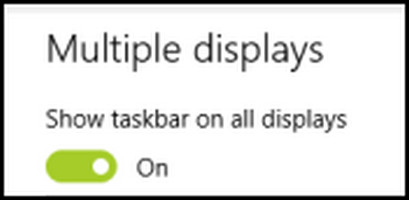
You can disable the taskbar for other displays by turning off the Show taskbar on all displays options.
If you are a Windows 11 user and want to maximize your start menu, check out the article to use the full-screen start menu on Windows 11.
Frequently Asked Questions
How do I open the Taskbar and Start Menu Properties in Windows 10?
To open the Taskbar And Start Menu Properties in Windows 10, right-click on Taskbar > Taskbar settings.
What is the new name of the Taskbar and Start Menu Properties option?
The name of Taskbar and Start Menu Properties has changed with the Windows update, and currently, it’s known as Taskbar settings.
How to open the Taskbar settings using cmd?
To open the Taskbar settings using cmd, navigate to Run > type start ms-settings:taskbar > Enter.
Conclusion
Taskbar settings open a lot of possibilities to change the window appearance. In this article, I’ve explained the process of navigating to the Taskbar settings and described the customization options.
Share your taskbar customization in the comment box below, and I’ll see you at the next one.
Cheers.

